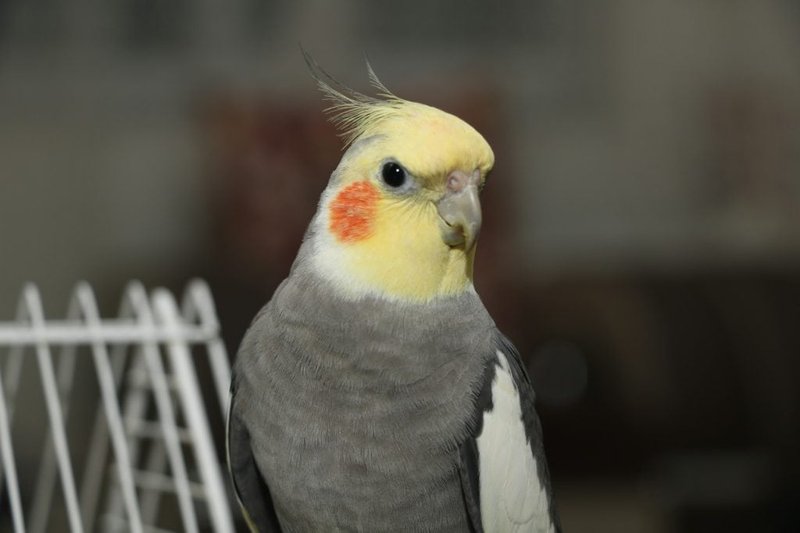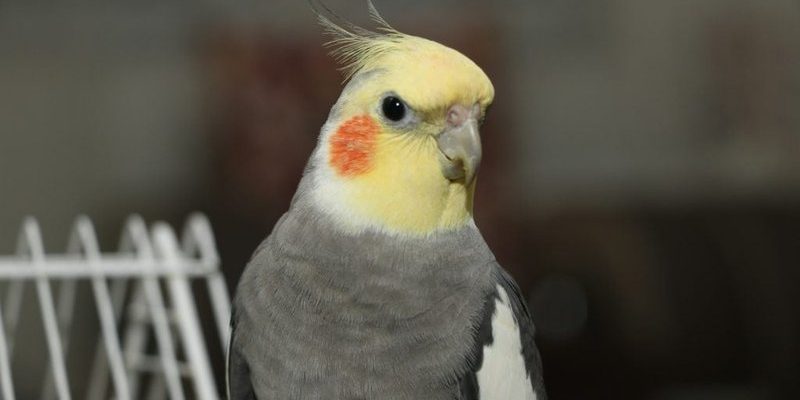
Just like how humans express themselves through gestures and words, cockatiels have their own unique ways of communicating. From the softest chirps to dramatic flapping, each behavior has a story to tell. As we dive into the world of cockatiel behaviors, you’ll gain a better understanding of your pet and learn how to interact with them meaningfully.
So, grab a comfy seat, maybe a cup of coffee, and let’s explore some common cockatiel behaviors and what they reveal about your delightful little companion!
Understanding Cockatiel Body Language
Cockatiel body language is a rich tapestry of movements and postures. While they can’t speak our language, they have plenty to say with their bodies. Understanding these cues can enhance your bond and help you respond to their needs.
Feather Fluffing: When your cockatiel fluffs up its feathers, it’s often a sign of comfort and relaxation. Think of it like when we wrap ourselves in a cozy blanket. They might fluff up when they’re resting or preening and even during familiar moments with you.
Posture Changes: Pay attention to how your cockatiel stands or perches. If they puff up and lean forward, it might mean they’re feeling bold or curious. On the other hand, if they’re hunched down with their feathers tight to their body, they could be feeling threatened or cold.
Let’s not forget the tail! A cockatiel will often fan out its tail feathers when excited or trying to impress you. It’s like when someone puts on their best outfit before a big event.
Chirping and Whistling: Communication is Key
Cockatiels are known for their charming vocalizations. These sounds can range from soft chirps to loud whistles, each carrying a different message!
Chirping: A soft, gentle chirp often indicates that your cockatiel is content. They might be singing to themselves or sharing a little tune with you. If you hear a consistent, repetitive sound, it could mean they’re trying to get your attention—much like a child calling out to a parent!
Whistling: Whistling can be a sign of happiness and playfulness. When your cockatiel whistles a cheerful tune, they’re likely feeling safe and engaged. You might even find them mimicking tunes they hear frequently, like your favorite song. It’s their way of showing they’re part of your world!
Squawking: However, if your cockatiel suddenly squawks loudly, it might be a call for help or a sign of distress. It’s essential to pay attention to the context of their vocalizations—what’s happening around them can give you clues about how they’re feeling.
Preening: Self-Care and Bonding
Preening is one of the most common behaviors you’ll observe in your cockatiel. It’s not just about looking good; it’s a significant part of their routine.
Why Do They Preen? Cockatiels have a natural instinct to keep their feathers clean and healthy. Preening removes dirt and old feathers, ensuring they can fly efficiently. Think of it as their version of a spa day!
Social Bonding: You might also see your cockatiel preening another bird or even you. This is a sign of affection. When they groom you, it’s their way of saying, “I trust you.” It’s a lovely moment of connection that can deepen your bond.
If you ever notice your cockatiel over-preening, it could indicate stress or boredom. Providing plenty of toys and mental stimulation is crucial to keep them happy and healthy.
Grooming and Scratching: Signs of Contentment
Cockatiels love to take care of themselves, and grooming plays a big role in their daily life.
Bathtime Fun: Some cockatiels enjoy splashing around in their water dishes or taking a misty shower. This behavior helps them keep their feathers in top shape and can be a joyful experience. Just like we feel refreshed after a bath, they seem to love it too!
Scratching: If you see your cockatiel scratching its head frequently, it’s usually a sign that they’re feeling great. They might be trying to reach an itch or simply enjoying the sensation. If you notice excessive scratching, however, check for any signs of skin issues or parasites.
Emphasizing a routine of grooming can keep your cockatiel looking fabulous while also ensuring they’re feeling their best.
Body Shakes: What’s the Meaning?
You might catch your cockatiel shaking their body every so often. It’s a curious behavior, and while it might look a bit quirky, there’s usually a clear reason behind it.
Shaking Off Water: After a bath or a splash in their water bowl, cockatiels shake their entire bodies to get rid of excess water. It’s similar to how a dog shakes off after a swim. This helps them dry off quickly and prevents their feathers from becoming too heavy.
Feeling Relaxed: Sometimes, a good shake can also indicate relaxation. It’s like a human stretching after a long day or letting out a big sigh of relief. If your cockatiel shakes and then settles down, it’s a sign they’re feeling comfortable in their space.
Keep an eye on this behavior during different situations to understand your cockatiel’s emotional state!
Exploring and Playing: Natural Curiosity
Cockatiels are naturally curious creatures, and exploring their environment is part of what makes them so engaging to watch.
Curiosity in Action: If you notice your cockatiel climbing around their cage or checking out new toys, it’s simply their way of investigating. They love to peck at new items and explore new spaces. Think of it as their way of saying, “What’s going on in this world?”
Handling and Interaction: Playing with your cockatiel is essential for their mental stimulation. Provide them with toys like swings, mirrors, and ladders. Encourage them to engage with you by providing gentle handling and playtime. You might find that they prefer some types of play over others, so pay attention to what keeps their interest.
Not only does playtime help with social bonding, but it also keeps them active and healthy.
Why Understanding Behavior Matters
Understanding cockatiel behaviors isn’t just about knowing why they do what they do; it’s about building a strong relationship with your pet.
Responding to Needs: If you can interpret their signals, you’ll be better equipped to respond to their needs. For example, if you know that a certain posture means they’re scared, you can make their environment feel safer.
Bonding and Enrichment: Discovering their unique personalities will help you create a more enriched environment for your cockatiel. Engaging with them during their favorite activities—be it whistling back, providing new toys, or simply spending time together—will only strengthen your connection.
In the end, every little behavior adds to your cockatiel’s personality. Take the time to observe and interact, and you’ll find that your bond blossoms in beautiful ways.
As you continue your journey with your cockatiel, remember that these little guys have a lot to share through their behaviors. By paying attention and learning the meanings behind their actions, you’ll create a more harmonious and loving environment. So, enjoy every whistle, fluff, and playful shake—your cockatiel is just being its wonderful self!

